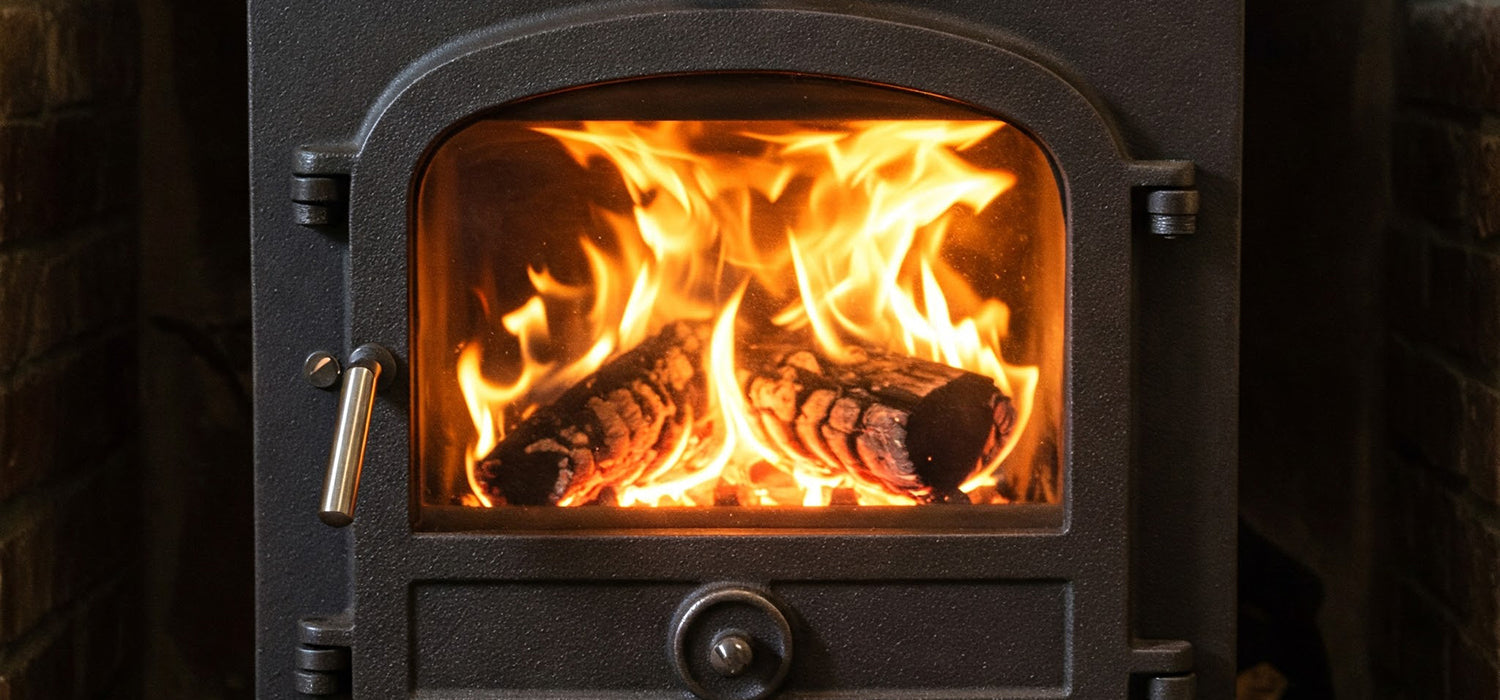
Why Your Log Burner Won’t Stay Lit (and How to Fix It)
Ever sat staring at your Log Burner, wondering why it’s sulking instead of roaring? Short answer: it’s usually damp wood, poor airflow, or a dirty stove. Stick around—because fixing these little quirks is easier (and warmer) than you think.
The Problem: Why Your Log Burner Won't Stay Lit
We’ve all been there. You’ve gathered the family round, poured yourself a glass of something nice, and imagined that glowing fire crackling away in your log burner. Except—nothing. The flame splutters, smokes a bit, and dies.
It feels like the stove is mocking you, but don’t take it personally. Nine times out of ten, the problem isn’t the burner itself but the conditions you’ve given it. Fires are fussy creatures, and they need the right mix of fuel, air, and a good start to thrive.
So, let’s unravel the most common reasons your log burner won’t stay lit.
Is it Your Fuel?
Imagine trying to light a soggy newspaper. That’s essentially what you’re doing if your logs are damp or unseasoned. Wet wood won’t burn properly—it just hisses, smokes, and leaves you frustrated.
The best fuel for your burner is seasoned hardwood such as oak, ash, or beech. These woods are dense, burn longer, and give you that steady, glowing heat you’re after. But they need to be dried properly first. Anything above 20% moisture content is asking for trouble.
If you don’t already own one, a simple moisture metre will change your life. One quick check, and you’ll know whether your log is ready for the fire or destined to smoulder.
Is it a Lack of Air?
Even with perfect wood, your log burner won’t play ball without proper airflow. Fires need oxygen like we need tea on a Monday morning—without it, things just won’t get going.
If your vents are shut or clogged with ash, your flames won’t get the oxygen they need to breathe. The same goes for overloading the firebox. Pile too many logs on top of each other and you’ll suffocate the poor thing before it has a chance to roar.
Think of it like a campfire—space between the logs is what keeps the fire alive.
A Step-by-Step Troubleshooting Guide
When your log burner won’t stay lit, it’s tempting to throw your hands up and declare it broken. But more often than not, a few quick checks can sort it out. Here’s your easy troubleshooting plan.
Check Your Wood and Kindling
Start small and simple. Use dry, seasoned logs and plenty of kindling. Think matchsticks, not tree trunks. A couple of firelighters tucked underneath can work wonders, too.
Hardwood logs are brilliant for keeping the fire going, but they can be stubborn at the beginning. That’s why kindling is so important—it’s the bridge between your match and your logs. No bridge, no fire.
If your logs are popping and fizzing like fireworks, they’re probably too damp. Swap them for drier fuel and see the difference immediately.
Verify Your Air Vents are Open
Before you even strike a match, double-check your air vents. Both primary (at the base) and secondary (higher up) controls should be open. Airflow is what feeds the flames in the early stages.
Once the fire’s established, you can play around with the vents to control the burn. Close them too soon, though, and you’ll snuff the fire out before it’s found its feet.
Ash build-up can also cause chaos. If your stove’s choked with last week’s ashes, clear them out. Think of it as giving your burner a clean set of lungs.
The Importance of an Updraft
Even if you’ve nailed the wood and vents, your chimney could be the silent culprit. Fires rely on an updraft—a pull of air through the stove and out the flue. Without it, smoke and flames struggle to rise, leaving you with a sluggish fire and a smoky living room.
Cold chimneys are a common offender. If your burner’s been out for a while, try warming the flue before lighting your fire. Roll up a sheet of newspaper, set it alight, and hold it in the firebox for a few minutes. That little trick often kickstarts the airflow.
And don’t forget the obvious—chimneys need regular sweeping. A bird’s nest or months of soot can block your updraft entirely. Annual maintenance is a must if you want your log burner to stay happy.
Best Practices for Lighting a Fire
So, how do you turn all of this into a reliable routine? Think of lighting your burner as a three-act play—set the stage, build the drama, and let the star perform.
First, prepare your stove. Clear out old ash, check your vents, and make sure the chimney’s ready. Then, build your fire with care. Kindling at the bottom, logs stacked loosely above, with plenty of breathing space.
Next, light it with confidence. Keep your vents fully open until the fire’s burning strong. Once you’ve got a steady flame, gradually add larger logs and adjust your air controls for efficiency.
The key is patience. Rushing leads to frustration, while a steady build-up leads to that satisfying glow. It’s a bit like brewing a proper cup of tea—you don’t dunk and dash, you let it steep.
And here’s a bonus tip: avoid throwing on massive logs and walking away. Fires like attention, at least at the beginning. Once they’re established, then you can sit back, relax, and enjoy the warmth.
Conclusion
A log burner that won’t stay lit is less of a mystery and more of a checklist. Damp wood, poor airflow, or a lazy chimney are usually the culprits. Luckily, all of these problems have simple fixes once you know what to look for.
By choosing dry hardwood, keeping your vents clear, and giving your chimney some TLC, you’ll transform your burner from a smoky nuisance into a glowing centrepiece. Add a little practice and patience, and lighting your stove will become second nature.
The truth is, every log burner has its quirks. Learning yours is part of the charm. So the next time your fire refuses to cooperate, remember—it’s not personal. With the right prep, you’ll be basking in the warmth before you know it.
Other content we think you'll love
- What Are the New Log Burner Rules in the UK?
- Why Your Log Burner is Smoking: Causes, Fixes, and Safety Tips
- Why Does My Log Burner Smell?
- Why Your Log Burner Is Burning Too Fast (And How to Fix It)
- Why Does My Log Burner Keep Smoking? Common Causes & Fixes
- Why Is My Log Burner Smoking? Causes, Fixes & Prevention
- Can You Safely Put a TV Above a Log Burner?
- Keeping Your Baby Safe Around Log Burners
- Can You Safely Install a Log Burner Near Glass?
- Why Your Fireplace Smells Like Burning Plastic (and What to Do About It)
- Log Burner Carbon Monoxide: Stay Safe from the Silent Killer
- Log Burner Law UK: The Complete Guide for Homeowners

